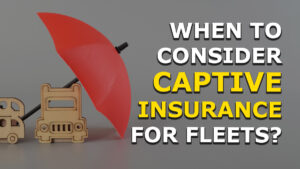
Roughly one-quarter of all freight hauled in the United States is transported in tanker trucks, and of that, nearly half is petroleum products like gasoline, diesel, and aviation fuel.
Hauling fuel and HAZMAT is a dangerous job.
In a 2016 FleetOwner article, Pinnacle Express vice president, Jim Fox, explains that any breakdowns are a big problem for aviation fuel haulers. If one of the fleet’s trucks has a problem and loses power, Pinnacle drivers are trained to get the truck out of the roadway if they can, even if it damages the vehicle.
“Everybody and their mother are driving down the road doing this now,” says Fox, gesturing with his thumb as if texting or using a smartphone. “I just can’t have my guys there on the side of the road. My drivers are actually trained to have them destroy a tire, a rim, a fender, fuel tank, fuel tank step than sit on the side of the road waiting for repair,” Fox explains. “With what we haul, when we get hit, we tend to leave a smoking crater in the middle of the intersection.”
To keep safety a priority, fuel and HAZMAT haulers can use new safety equipment and best practices that can lower risk and insurance premiums.
The Risk That Surrounds Fuel Haulers
Fleets transporting tanker trucks understand that there are anti-cargo theft and anti-terrorism concerns that drive these loads to be delivered as quickly as possible.
With around 10,000 gallons of fuel in two separate tankers, speed is also balanced with safety requirements. You must be aware of the dangers and constantly be vigilant.
There are a lot of security policies to prevent a terror attack, since it literally is a bomb on wheels. Some policies already in place, include:
- Drivers cannot leave their trucks on lunch breaks
- Drivers can only take lunch in certain areas, and
- Drivers cannot tell anyone where they get the gas from or tell anyone what they are hauling
It is important that the truck is properly grounded to prevent sparks from igniting any vapor as static electricity can build up in the truck when liquid is transferred or simply from the movement of pipes and truck parts.
The biggest risk comes at deliveries because exhaust from other people driving nearby can ignite gas, and people could be walking around smoking.
When it comes to obstacles in the road or accidents, drivers have two possibilities: (1) stand on those brakes and stop the truck or (2) hit whatever it is if they cannot stop. Drivers cannot turn the wheel to avoid obstacles because they will roll over, leading to a much bigger problem.
There are 3 main areas of focus for fleets when it comes to safety.
- driver skills
- equipment
- in-cab technology
Driver Training Reduces Risk
Your road safety approach should focus on driver skills and behavior. Mandatory defensive driving training courses and online training videos teach safe driving techniques and behavior, with an overall aim of reducing risks.
For example, if driver trainers notice a habit of hard acceleration or hard braking, they should make sure a video training schedule includes driving fundamentals and defensive driving topics.
>>> Learn more about HAZMAT Training and the Insurance Benefits <<<
All custom training schedules should be accompanied by common new driver training, such as reviewing common maintenance and pre-trip inspection training, what to expect during a roadside inspection and how to treat inspectors, highlight drug testing processes and marijuana regulations, seasonal safe driving tips, cargo securement training, etc.
Customized training should also be measurable using quiz assessments to track driver performance. If their assessment score is low, then the training needs to be retaken.
The Right Equipment Reduces Risk
To reduce maintenance costs and roadside breakdowns, many fuel haulers purchase new trucks. These tractors can be on a replacement cycle of 5-7 years and 450,000-500,000 mi.
Trucks can also be fitted with Electronic Stability Control (ESC) systems. ESC anticipates rollovers and loss of directional control, so it can apply brakes on the vehicle in a way that will improve its control.
For example, if a truck is going too fast around a corner and the system perceives that the truck is likely to roll over, ESC can intervene to brake the truck and slow it down.
For trailers, it is recommended that fleets get trailers with disc brakes. Thesetrailers are almost maintenance-free as disc brakes and last three times longer than drum brakes.
The reduced maintenance leads to better Compliance, Safety, Accountability (CSA) scores on maintenance/ shop time.
>>> Learn more about What CSA Scores are <<<
In-cab Technology Reduces Risk
If your fleet is not using Electronic Logging Devices (ELDs), then using in-vehicle monitoring systems (IVMS) will provide information on driver behavior across a range of areas such as speeding, harsh braking and seat belt compliance and are used to support drivers to drive safely.
Otherwise, most ELDs utilize engine data telematics that can gather and track similar data.
In-cab cameras can also be used with IVMS to coach drivers. Waccamaw Transport, a regional fuel hauler based in Selma NC, deployed a video-based safety program that reduced insurance premiums by 10 percent.
What is fuel haulers/HAZMAT insurance?
Hazmat Insurance can be complicated and hard to find. You need a specialist to review your risk and make sure you do not have any coverage caps at an affordable cost. CNS Insurance specializes in Hazmat Risk.
Our specialists will review your insurance needs and recommend coverages that protect you and your company.





